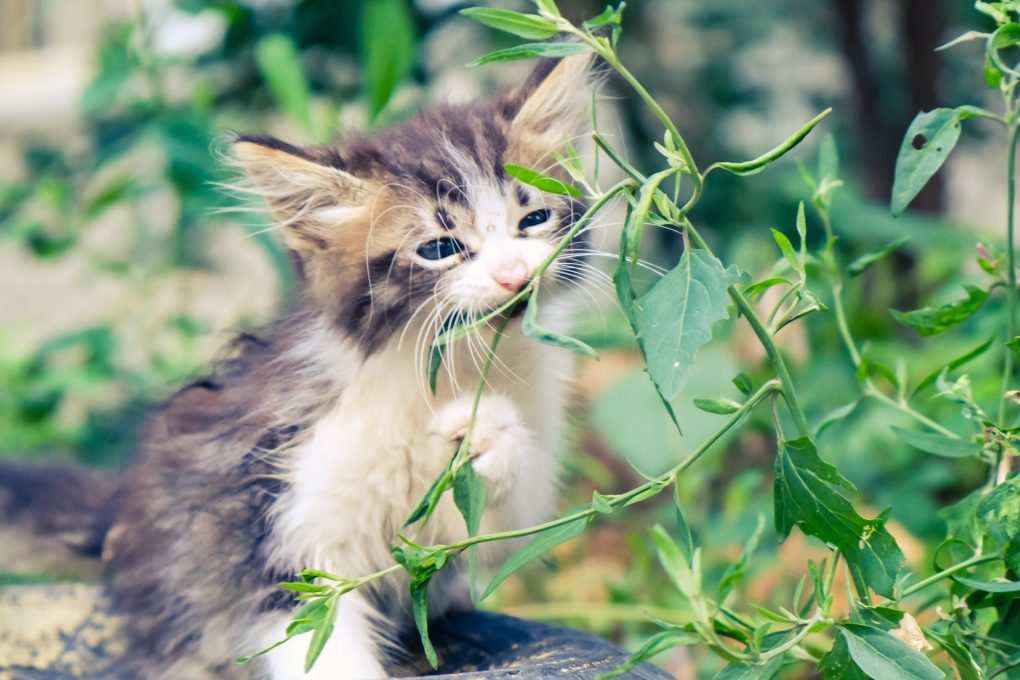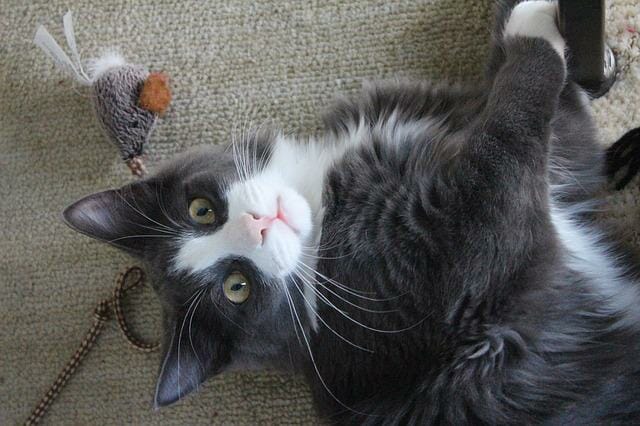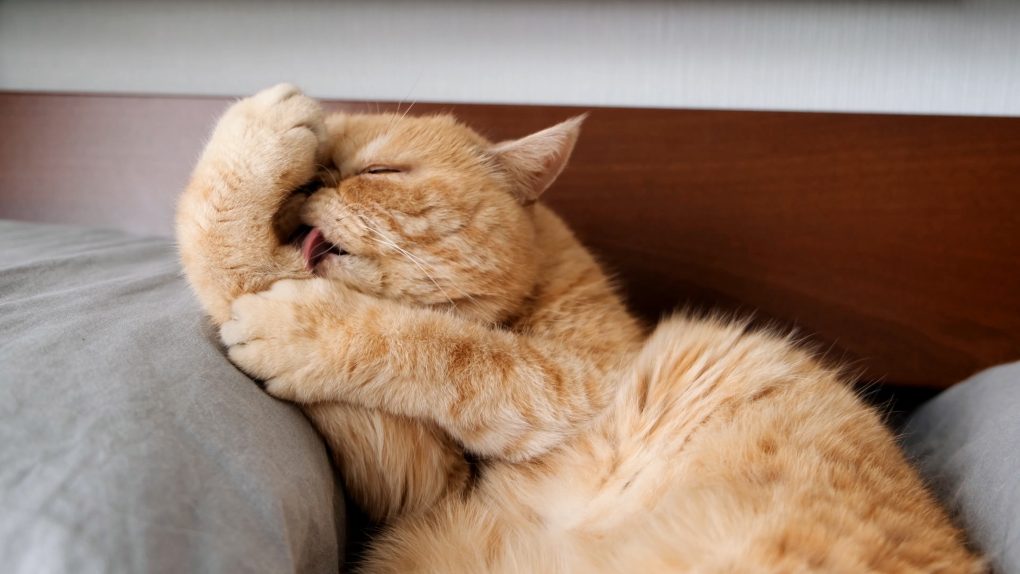Does Catnip Calm Cats: What You Need to Know About Catnip
Catnip has a stimulating effect on cats rather than a calming effect. When a cat sniffs or ingests catnip, the active ingredient, nepetalactone, triggers a response in the cat’s brain that can cause them to become more playful, energetic, and hyperactive. However, this effect usually lasts only a few minutes, after which the cat will usually become more relaxed and sedated.


Table of Contents
Reason Why Cats Love Catnip
Catnip contains a natural compound called nepetalactone, which uniquely affects cats. When cats smell or ingest catnip, the nepetalactone binds to receptors in the cat’s olfactory bulb and then to the amygdala, the part of the brain that processes emotions.
The result of this interaction is that the cat’s behavior is altered. Most cats become more active, playful, and sometimes even hyperactive. For example, they may rub, roll, or even lick the catnip and become more interested in their surroundings.
It’s important to note that not all cats react to catnip similarly, and some may not respond at all. The sensitivity to catnip is an inherited trait; only about two-thirds of cats are affected by it. Additionally, kittens and senior cats are less likely to respond to catnip than adult cats.
Effects of Catnip on Your Cat
Euphoria
According to Collins English Dictionary, euphoria is a feeling of intense happiness, excitement, or pleasure. In the context of cats and catnip, euphoria refers to the state of bliss or pleasure that many cats experience when they smell or ingest catnip.
The active ingredient in catnip, nepetalactone, triggers a reaction in the cat’s brain that causes the release of certain chemicals, including dopamine and serotonin, associated with pleasure and happiness. This can result in various behaviors, such as rolling, rubbing, purring, and sometimes even drooling, as the cat appears blissfully.
However, it’s important to note that not all cats respond to catnip similarly, and some may not experience euphoria. Additionally, the effects of catnip are usually temporary, lasting only a few minutes before wearing off. Nevertheless, catnip can be a fun and enriching stimulation for many cats.
Playfulness
Playfulness is a common effect of catnip on cats. When cats smell or ingest catnip, it can trigger a surge of energy and excitement, causing many cats to become more playful than usual.
Cats may chase toys or other objects, run around, pounce, or engage in other forms of play that they may not normally do. They may also exhibit playful behavior with their owners, such as play-biting or stalking.
The reason behind this increased playfulness is the effect of the active ingredient in catnip, nepetalactone, on the cat’s brain. Nepetalactone can cause a release of certain chemicals, including adrenaline, that can increase the cat’s energy levels and make them more prone to playful behavior.
Relaxation


Catnip can also have a relaxing effect on some cats. After the initial surge of energy wears off, some cats may become calmer and sedated, perhaps even falling asleep.
The relaxing effect of catnip is thought to be related to the same active ingredient, nepetalactone, that causes the initial excitement. When cats are exposed to catnip, nepetalactone can cause a change in the cat’s behavior that leads to a reduction in stress and anxiety. This can result in a more relaxed state for the cat.
Increased Vocalization
Some cats may exhibit increased vocalization as a response to catnip. For example, when exposed to catnip, the active ingredient nepetalactone can cause changes in a cat’s behavior and mood, which may include an increase in vocalization.
Cats may meow or make other sounds more frequently or loudly than usual. This may result from excitement or heightened emotions caused by the catnip.
Benefits of Catnip for Cats
Encouraging Play and Exercise
Catnip can be an effective tool for encouraging play and exercise in cats. Exposure to catnip can trigger a surge of energy and excitement, causing many cats to become more active and playful than usual. This can help to encourage exercise and physical activity, which is important for maintaining a healthy weight and preventing obesity in cats.
Using catnip toys or incorporating catnip into playtime can help to encourage cats to engage in physical activity and play. This can be particularly helpful for indoor cats that may not have access to outdoor playtime.
Training
Catnip can be a helpful tool for training cats. Using catnip as a reward for positive behavior can encourage cats to repeat that behavior, which can be helpful for training and encouraging good habits.
For example, if you’re training your cat to use a scratching post instead of furniture, you can reward them with a sprinkle of catnip on the post when they use it correctly. This can reinforce the behavior and encourage them to continue using the post instead of the furniture.
Similarly, you can use catnip to reward other positive behaviors, such as coming when called, using the litter box, or learning a new trick. This can help to encourage good behavior and strengthen the bond between you and your cat.
Reducing Stress and Anxiety
Catnip can have a calming effect on some cats, which can help to reduce stress and anxiety. For example, the active ingredient in catnip, nepetalactone, can cause changes in a cat’s behavior and mood, reducing stress and anxiety.
Cats prone to anxiety or nervousness may benefit from exposure to catnip. The calming effects of catnip can help to reduce stress and promote relaxation, which can help to improve their overall well-being.
Using catnip as a part of a calming routine, such as incorporating it into a pre-bedtime routine or using it during stressful situations, such as vet visits or travel, can be particularly helpful in reducing stress and anxiety in cats.
Providing Mental Stimulation
Catnip can provide mental stimulation and enrichment for cats. When exposed to catnip, some cats may become more playful and curious, leading them to explore their environment more and engage in a wider range of behaviors.
Incorporating catnip into playtime or using catnip toys can help to encourage cats to engage in more complex play behaviors, such as chasing, pouncing, and batting. This can help to provide mental stimulation and prevent boredom, which is important for a cat’s overall well-being.
Additionally, the effects of catnip on a cat’s behavior can encourage them to explore their environment more, providing additional mental stimulation and enrichment. This can help to prevent destructive behaviors and encourage healthy, active behavior.
Easier Grooming


Catnip can help make grooming easier for some cats. When exposed to catnip, they may become more relaxed and calm, making them more cooperative during grooming sessions.
Some cats may become anxious or agitated during grooming, making it difficult for their owners to groom them properly. However, if these cats are exposed to catnip before grooming, it can help to reduce their stress and make them more relaxed and cooperative.
Additionally, some cats may be more prone to mats or tangles in their fur, making grooming more difficult. However, the increased playfulness and activity that can result from catnip exposure can help prevent mats and tangles by encouraging cats to move around and stretch, which can help keep their fur healthy and prevent knots from forming.
